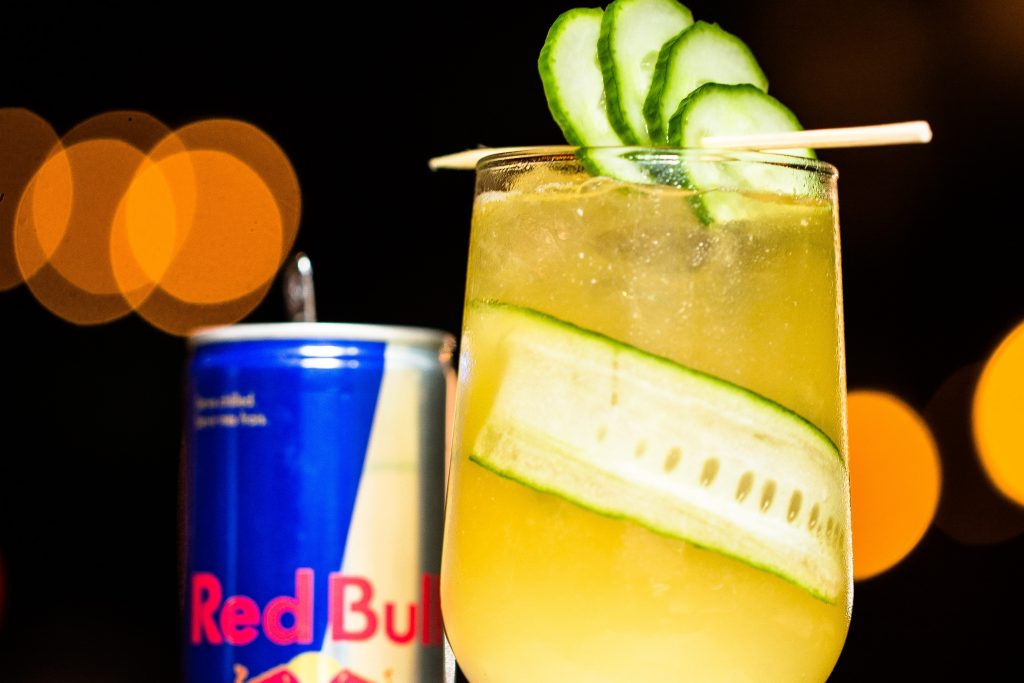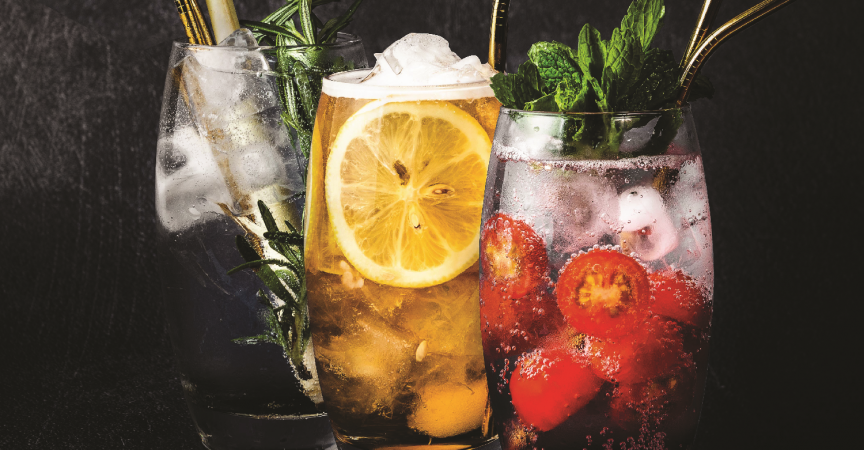Value-Added Ingredients for Mocktail Menus
By: Marisa Pelligrino for Red Bull
As Gen Z grows in buying power, foodservice operators will need to adapt to the change in consumer habits and tastes. According to Jo-Ann McArthur, president and founding partner of Nourish Food Marketing, “Gen Z and millennials are distancing themselves from their boozy Gen X and boomer parents.”
The popularized term is ‘sober curious,’ coined by Ruby Warrington in her book Sober Curious: The Blissful Sleep, Greater Focus, Limitless Presence, and Deep Connection Awaiting Us All on the Other Side of Alcohol.
According to McArthur, two of the biggest drivers behind the trend is an increased interest in healthier lifestyles as well as the legalization of cannabis. According to the World Health Organization, the number of drinkers has been decreasing at a steady pace since 2000, with young people leading the way. Restaurants Canada’s research shows that in 2013, in Canada, those between the legal drinking age and 24-years-old accounted for 27 per cent of all orders at a bar. In 2018, the share dropped to 13 per cent. A report by Bon Appétit stated, “The market for low and no alcohol beverages is expected to grow by 32 per cent between 2018 and 2022.” (1)
Bars and restaurants have an opportunity to make this trend work positively for their bottom line. Take advantage of this shift and introduce non-alcoholic options that will appeal to this cohort and their health-conscious lifestyle.
That’s where value-added ingredients come into play. These are ingredients such as caffeine, kombucha and vitamins to name a few, which when added to a non-alcoholic beverage help to raise its value. McArthur points out, “consumers expect their food and beverage to be an aid in health and are looking towards getting more functional benefits.” With an increased perceived value on the consumer end, they can also increase your profit margin.
Many restaurants are now offering alcohol-free options and bars are creating entire alcohol-free menus of drinks. PrettyUgly bar in Toronto offers a selection of mocktails on their menu, alongside alcoholic options. Robin Goodfellow of PrettyUgly says the challenge came in erasing the stigma attached to what has, for better or worse, become known as ‘mocktails.’ When drinking at PrettyUgly bar, they’re referred to as a placebo and for Goodfellow and his team, they wanted to create flavours you get from ordinary drinks “but more elevated, a mature elegance,” producing a placebo for people who drink and those who don’t. “When the drinks come to the table, you can’t tell the difference between the cocktails and, the placebo.”

As McArthur points out, “people are looking for more rather than less. Say goodbye to ‘virgin’ anything, or straws and umbrellas. They want drinks with benefits. Have a good mixologist who understands how to pair drinks with the food being offered. And how to design a drink to deliver that layered complexity.” Goodfellow agrees, adding, “our drinks are not just sugar, syrup and soda. We spend time making all these cool things for people to enjoy so they come back!”
Hana James of Greenhouse Juice Co. has seen an increase in the need for that added health benefit. “The customer wants a healthy choice wherever they go.” Kombucha is one such ingredient that has grown in popularity thanks to its health benefits and it is now also being added to non-alcoholic drinks.
Like Goodfellow, James also sees adding an ingredient like kombucha to a product gives you the feeling of an elevated cocktail experience. And this means people are willing to pay for it. For restaurant or bar owners, it’s profitable. “And just because there’s no alcohol doesn’t mean it’s free or cheaper, it’s still very tasty and still takes time to build the final product.” You might have a customer who would normally only order water or a soft drink and now they’re willing to spend the same amount they would for a beer for something they deem healthy.
James feels the value-added ingredients are successful because “you don’t want to feel like you’re giving anything up. So you can feel good about drinking it but you also feel it’s doing good for your body and you want to drink it.” And this will bring customers back which will add to a restaurant’s bottom line.
Caffeine has always been an ingredient that people gravitate towards. Adding it to non-alcoholic drinks is a great way to have people enjoy a drink which will make them feel like they are still having a regular cocktail, and at the same time benefits the restaurant who has now sold an $8 beverage as opposed to a $3 club soda. Having these options on a menu makes sense for restaurants and bars who would otherwise lose out on potential customers. “After a long day, our guests look for a pick-me-up to kick off their night or weekend. Red Bull is a functional beverage and a premium offering that fits our brand. Our guests are willing to pay for that added value. It is incremental revenue for us and no doubt has contributed to our bottom line every year,” states Cameron Bogue, director of beverage, at Earls Restaurants.
In the future, Hill Street Beverage Company chairman and CEO, Terry Donnelly, believes that THC and CBD will become popular ingredients to incorporate into cocktails. While this is not a legalized practice right now, Donnelly believes that “we could see 30 per cent of all beverages consumed for recreational or social intoxication being infused with cannabis,” which is a significant market for a value-added ingredient.
“Everyone knows they need to take care of themselves,” says Goodfellow, which is why the health-conscious trend will continue to grow steadily. “It’s a mindset nowadays where people want to be healthy. That’s why we’re doing these health-conscious cocktails at PrettyUgly bar. You might not want to drink any alcohol, but you can still come to my bar and have a good time!”









